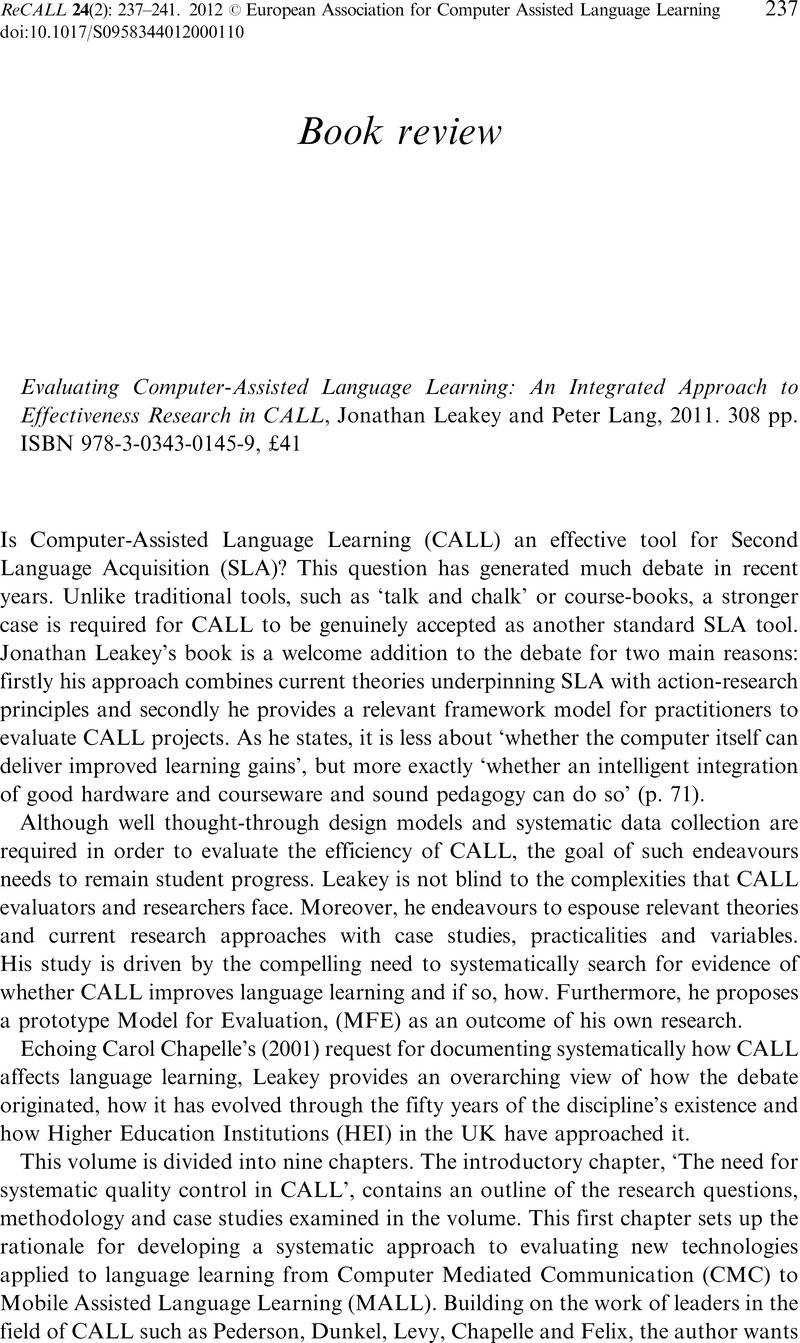No CrossRef data available.
Article contents
Evaluating Computer-Assisted Language Learning: An Integrated Approach to Effectiveness Research in CALL, Leakey Jonathan and Lang Peter, 2011. 308 pp. ISBN 978-3-0343-0145-9, £41
Review products
Evaluating Computer-Assisted Language Learning: An Integrated Approach to Effectiveness Research in CALL, Leakey Jonathan and Lang Peter, 2011. 308 pp. ISBN 978-3-0343-0145-9, £41
Published online by Cambridge University Press: 27 April 2012
Abstract
An abstract is not available for this content so a preview has been provided. Please use the Get access link above for information on how to access this content.

Information
- Type
- Book review
- Information
- Copyright
- Copyright © European Association for Computer Assisted Language Learning 2012
References
Chapelle, C. (2001) Computer Applications in Second Language Acquisition: Foundations for Teaching, Testing and Research. Cambridge: Cambridge University Press.Google Scholar
Dunkel, P. (1991) Research on the effectiveness of computer-assisted instruction and computer-assisted language learning. In: Dunkel, P. (ed.), Computer-Assisted Language Learning and Testing: Research Issues and Practice. New York: Newbury House, 1–36.Google Scholar
Felix, U. (2005) Analysing recent CALL effectiveness research — towards a common agenda. Computer Assisted Language Learning, 18(1/2): 1–32.CrossRefGoogle Scholar
Levy, M. (2002) CALL by design: discourse, products and processes. ReCALL, 14(1): 58–84.CrossRefGoogle Scholar
Pederson, K. M. (1988) Research on CALL. In: Smith, W. F. (ed.), Modern Media in Foreign Language Education: Theory and Implementation. The ACTFL Foreign Language Education Series.Google Scholar

